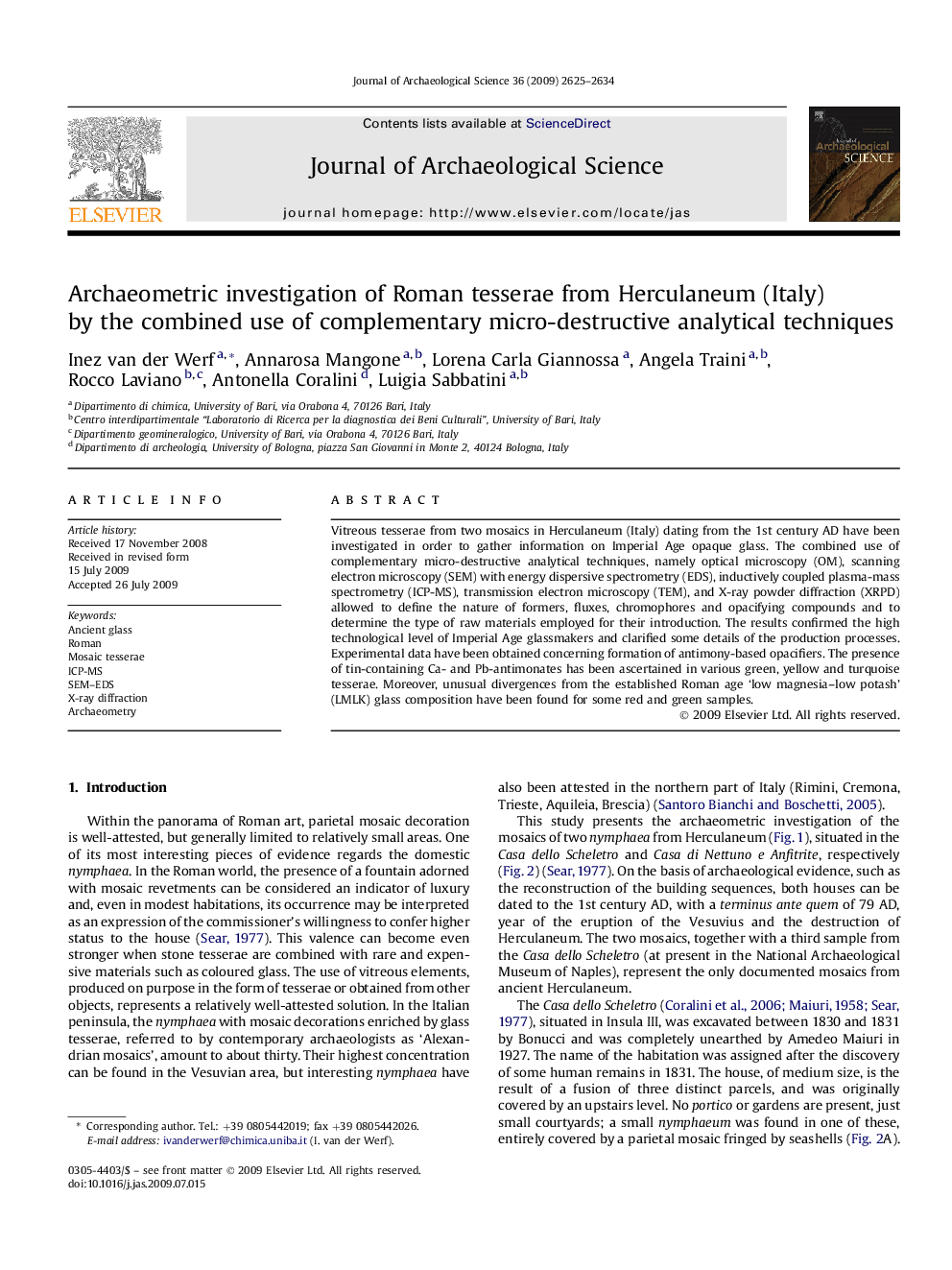| Article ID | Journal | Published Year | Pages | File Type |
|---|---|---|---|---|
| 1036078 | Journal of Archaeological Science | 2009 | 10 Pages |
Vitreous tesserae from two mosaics in Herculaneum (Italy) dating from the 1st century AD have been investigated in order to gather information on Imperial Age opaque glass. The combined use of complementary micro-destructive analytical techniques, namely optical microscopy (OM), scanning electron microscopy (SEM) with energy dispersive spectrometry (EDS), inductively coupled plasma-mass spectrometry (ICP-MS), transmission electron microscopy (TEM), and X-ray powder diffraction (XRPD) allowed to define the nature of formers, fluxes, chromophores and opacifying compounds and to determine the type of raw materials employed for their introduction. The results confirmed the high technological level of Imperial Age glassmakers and clarified some details of the production processes. Experimental data have been obtained concerning formation of antimony-based opacifiers. The presence of tin-containing Ca- and Pb-antimonates has been ascertained in various green, yellow and turquoise tesserae. Moreover, unusual divergences from the established Roman age ‘low magnesia–low potash’ (LMLK) glass composition have been found for some red and green samples.
